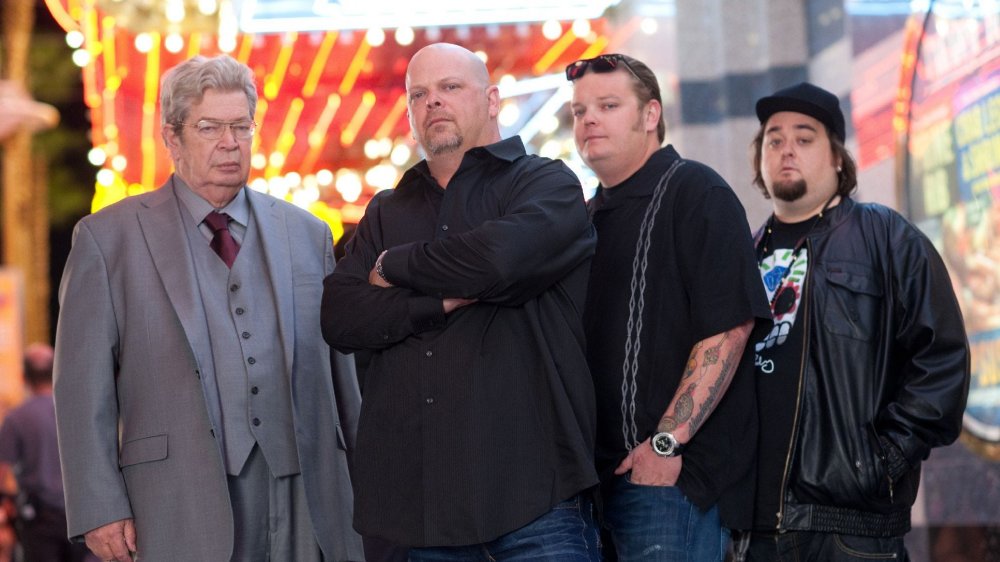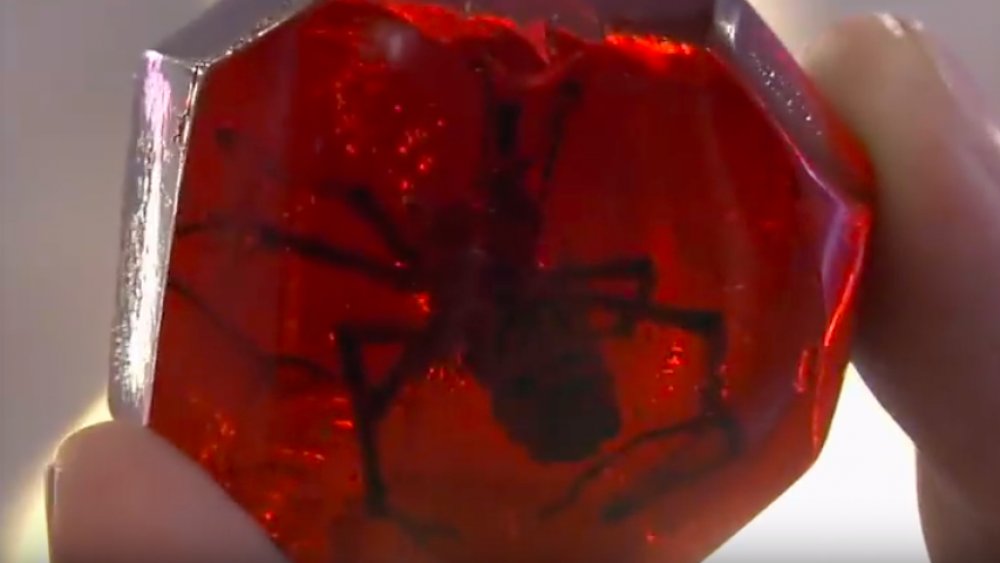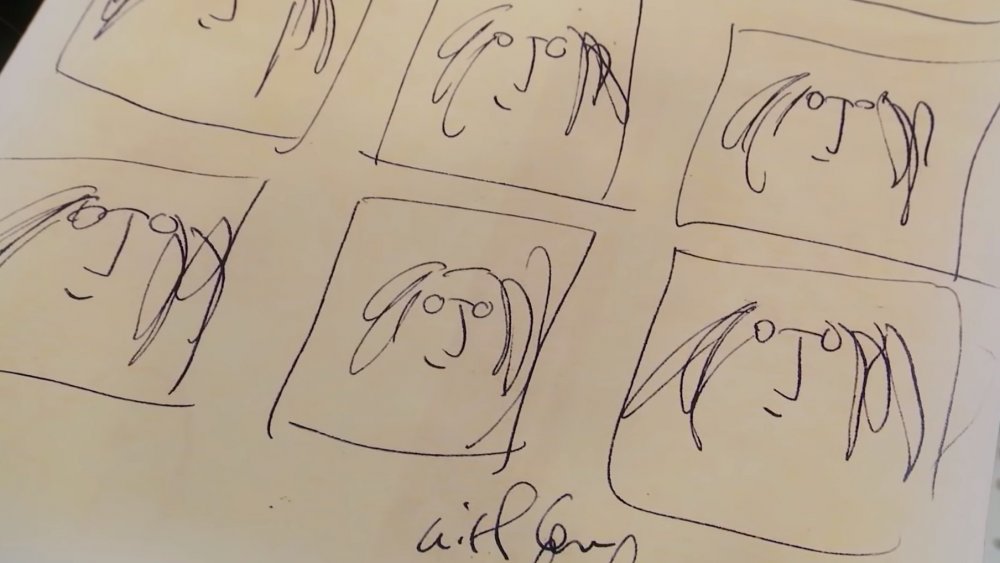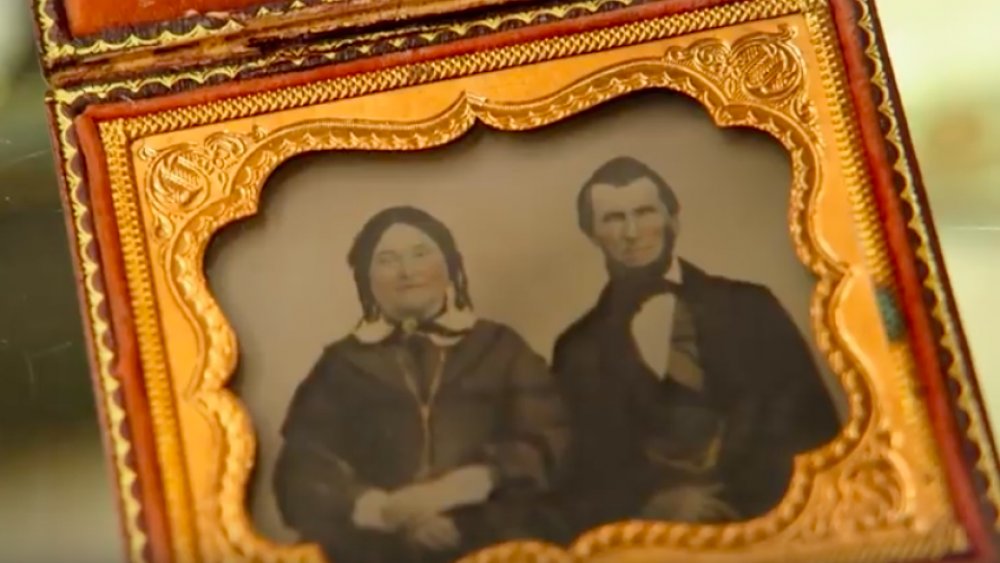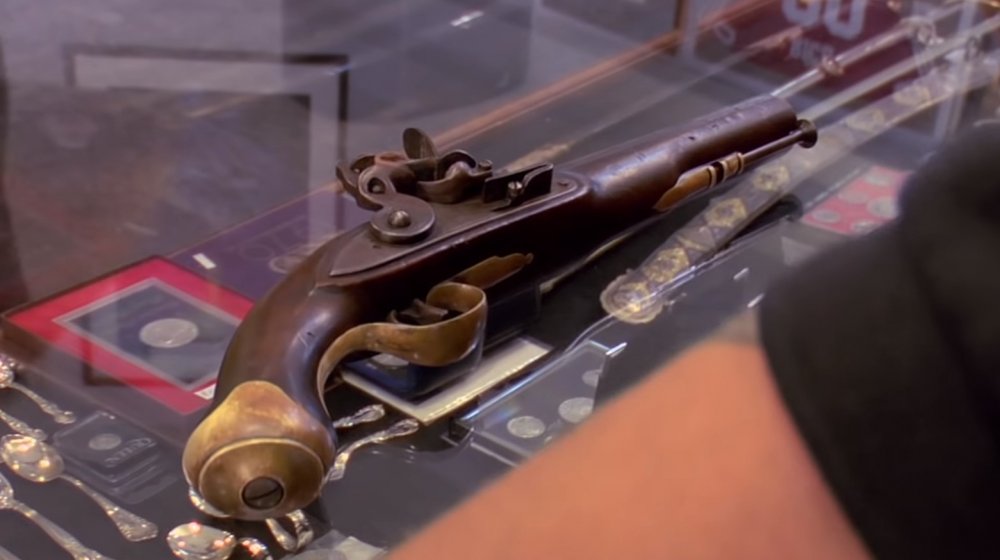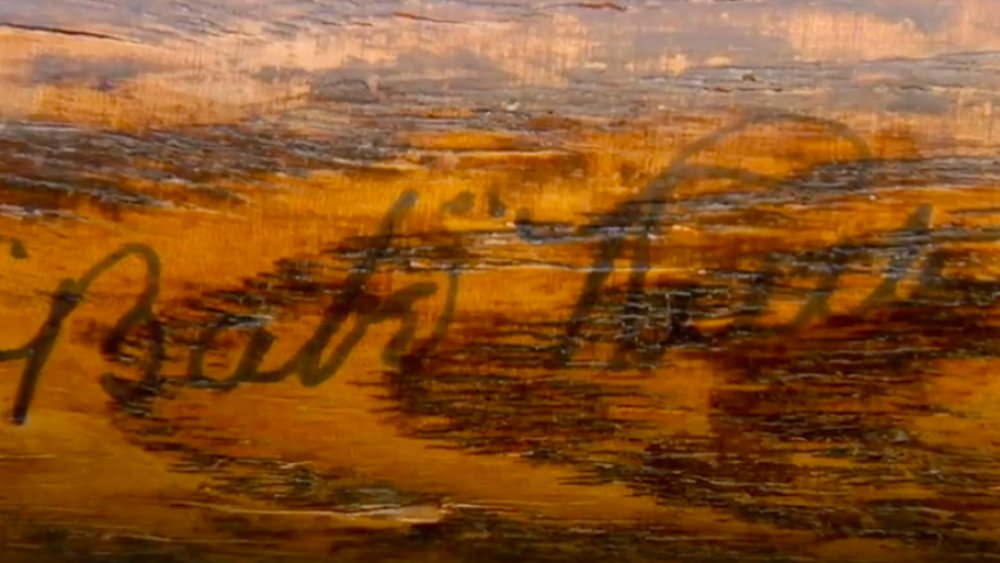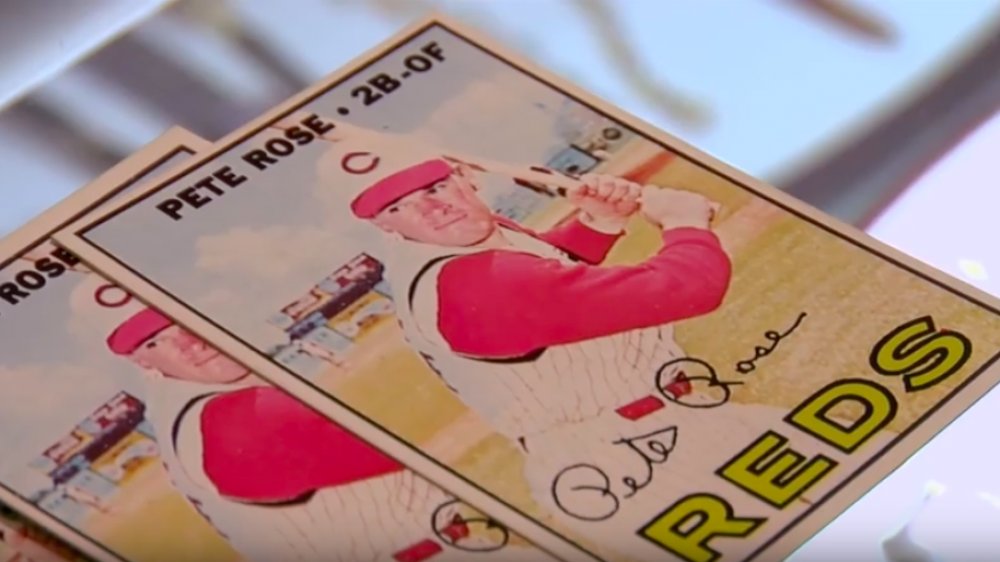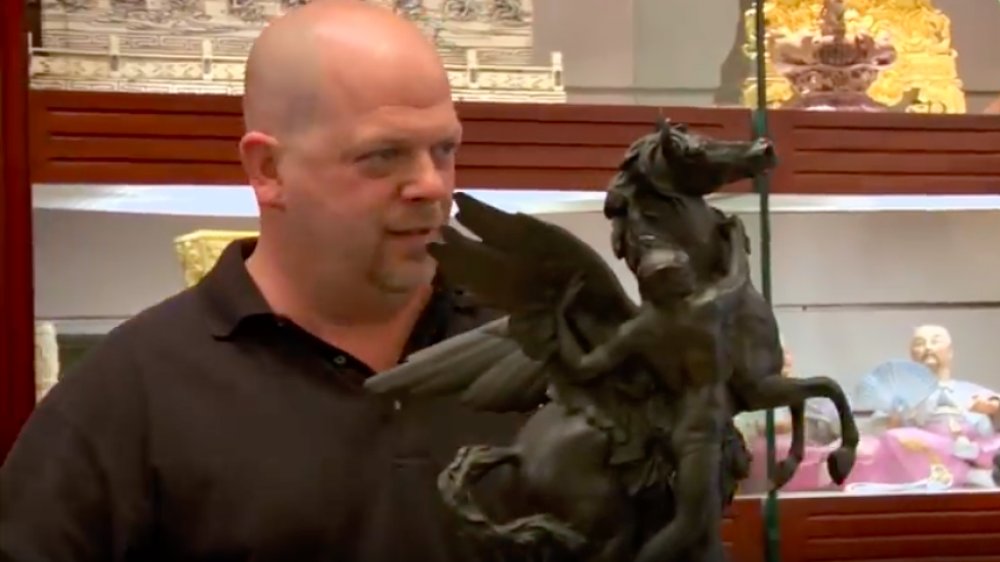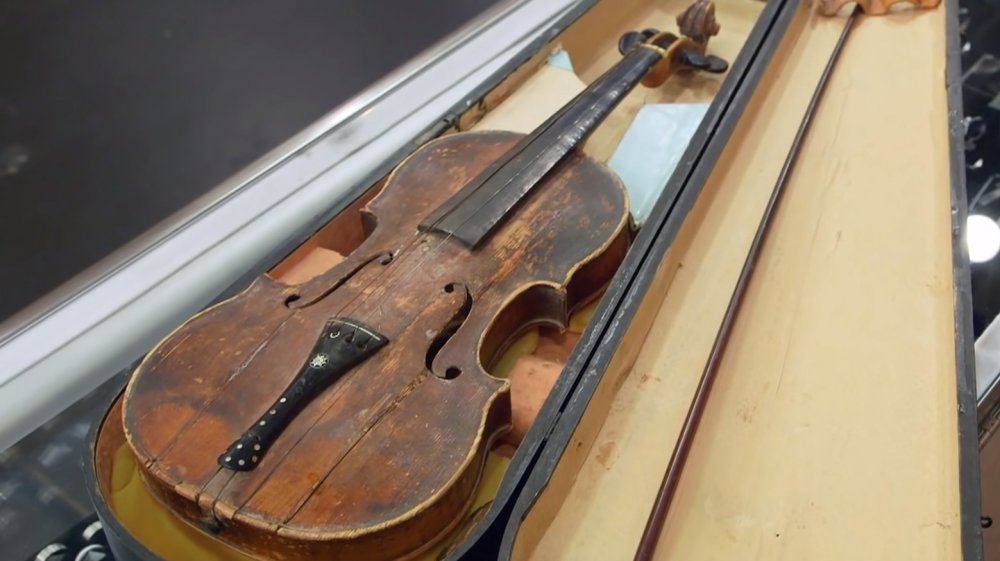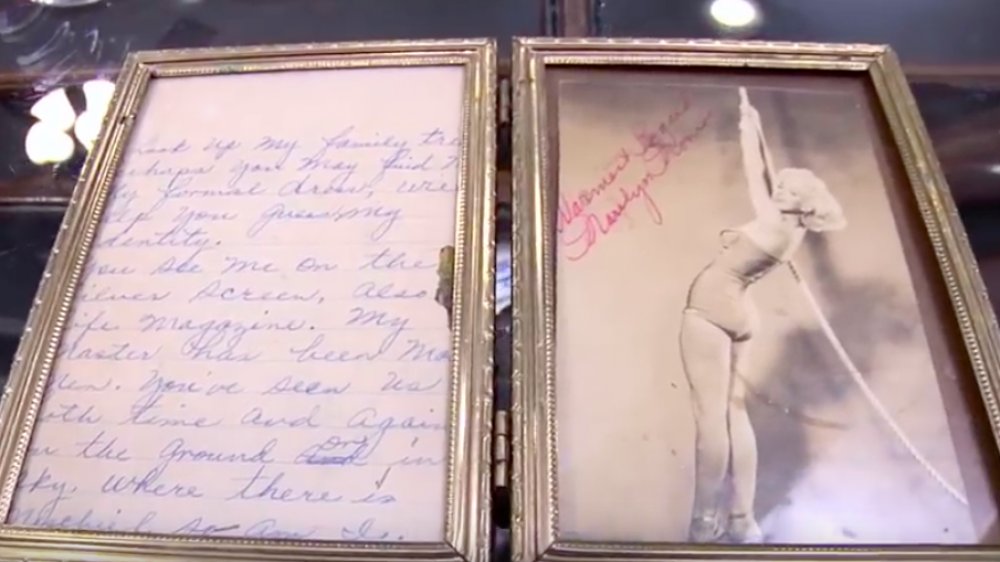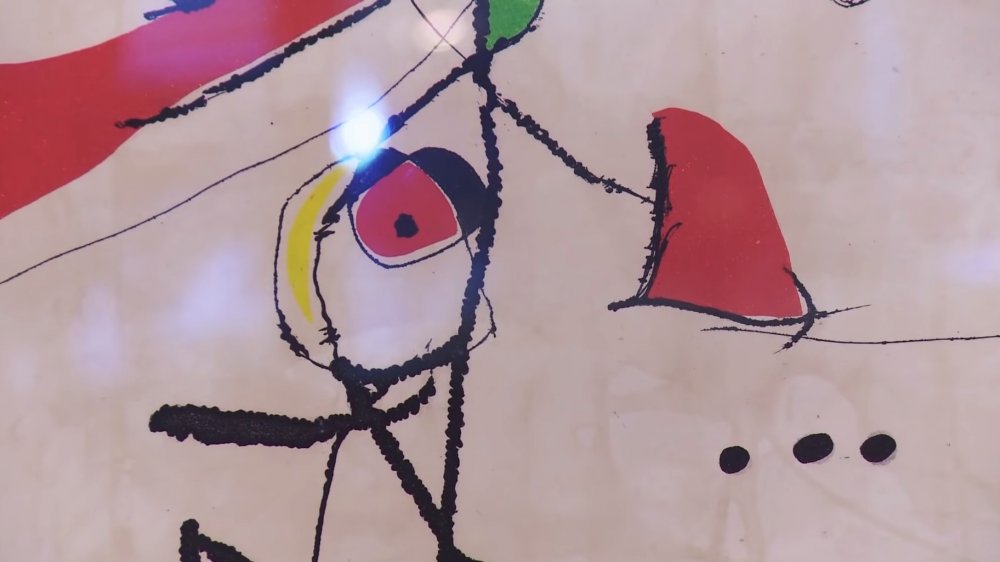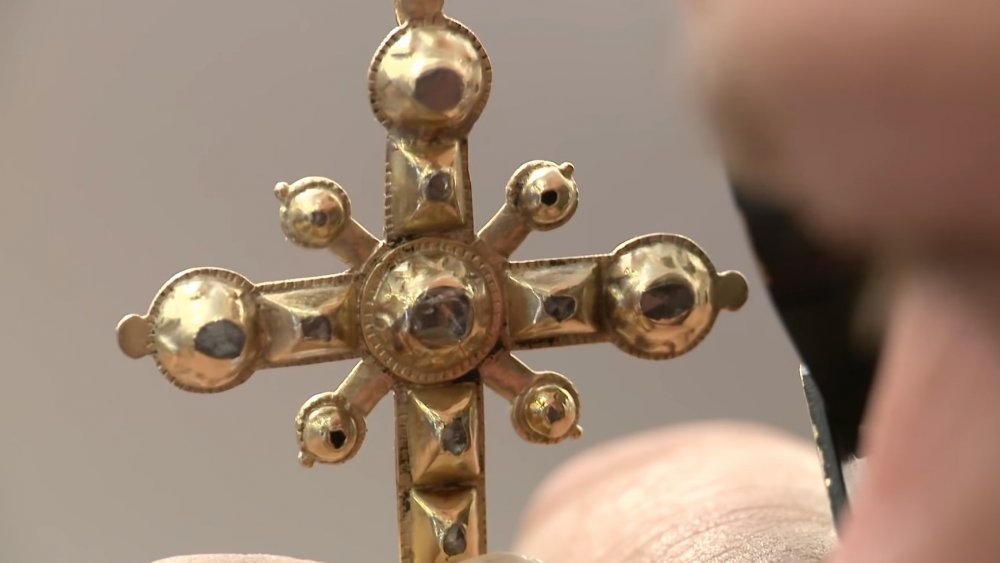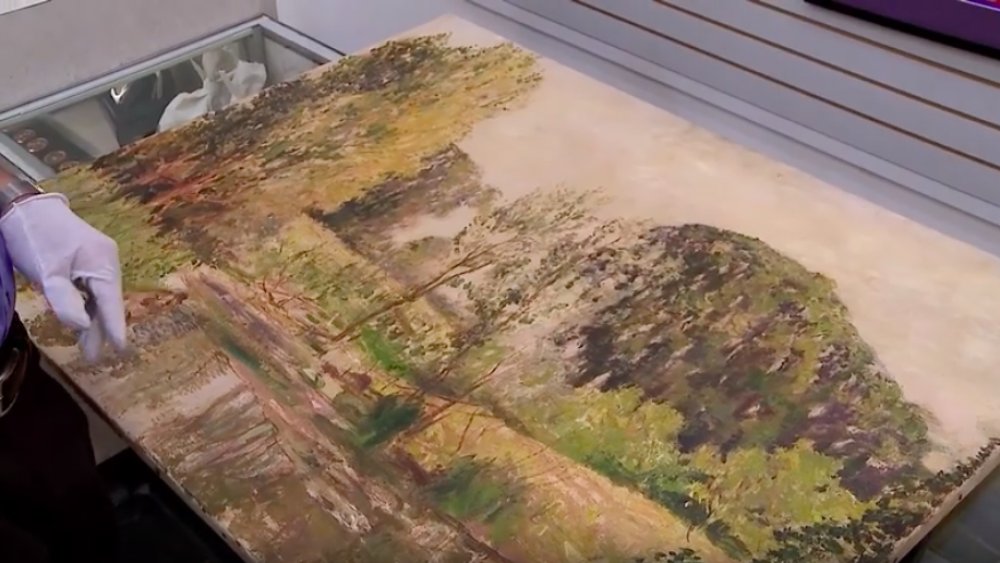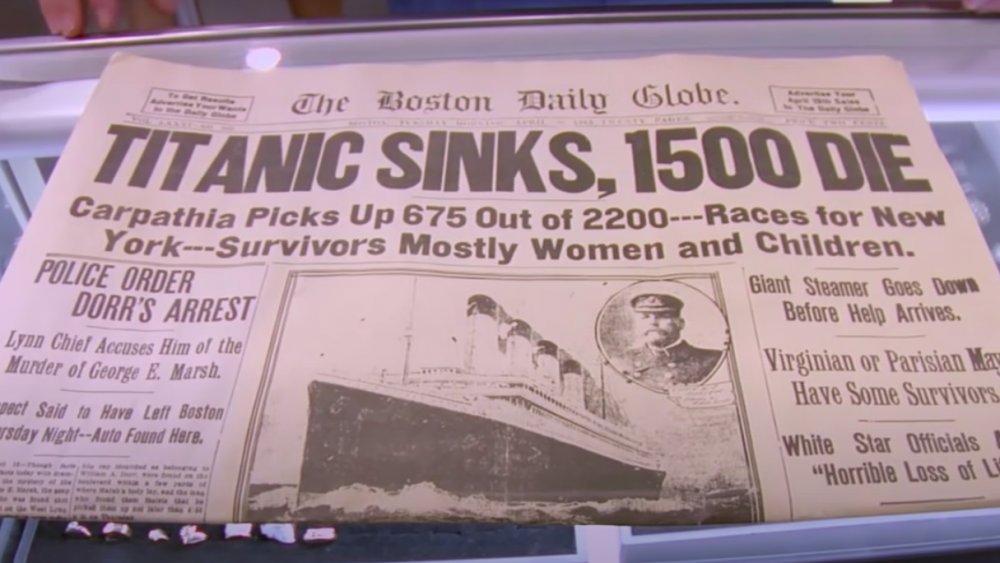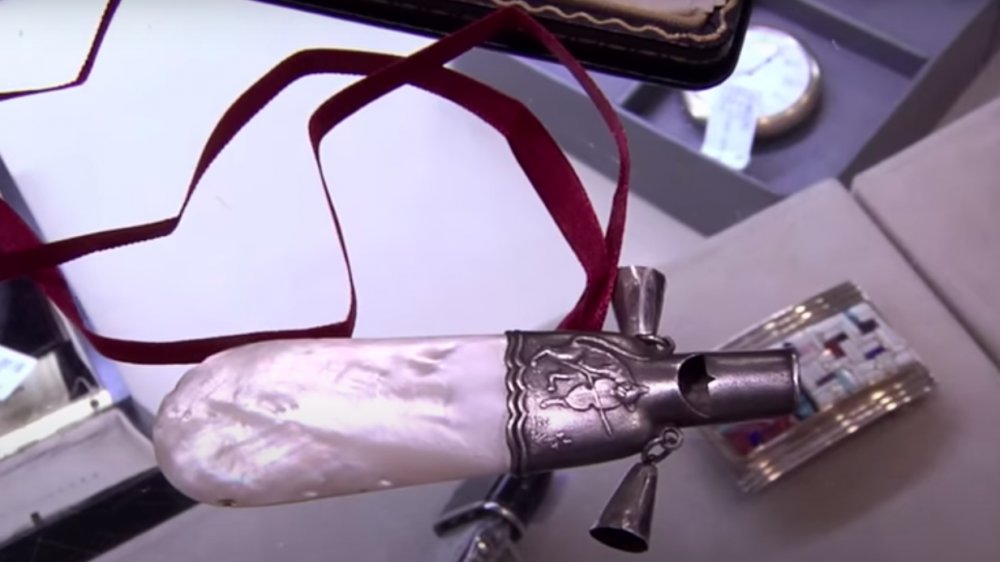Fake Items That Devastated Their Owners On Pawn Stars
Gold & Silver Pawn Shop, site of the History Channel's popular reality TV series Pawn Stars, has seen thousands of people walk through its doors, clutching a precious item they believe to be worth big bucks. From a genuine Egyptian mummy mask to a Super Bowl championship ring, the guys of Pawn Stars have seen — and bought — it all.
The cast loves the wheeling and dealing necessary to their line of business. What they don't like so much? Telling people that their treasured belongings allegedly passed down through the generations are, in fact, actually nothing more than fakes. It's never an easy task to reveal to someone that their million-dollar dream is a total bust, but it happens quite often in the shop, and the reactions from disillusioned would-be sellers can range from disappointment and disbelief to stubbornness and anger. Here are some fake items that devastated their owners on Pawn Stars.
50 million-year-old gemstone
A seller strolls in, believing he has something really special in his possession: a 50 million-year-old piece of Baltic amber with a fossilized tarantula trapped inside. He presents it to Chumlee in the hopes of getting $50,000 for it. Turns out he's in luck, as there's a gemstone expert already at the pawn shop.
The seller has authentication papers from an entomologist. But the expert doesn't think that's the correct person to authenticate a gemstone, so he suggests sending it off to the Gemological Institute of America, the organization that sets the quality standards for diamonds and other stones. The catch? It costs $200 to ship it off and have it evaluated. The seller readily agrees. Why wouldn't he? It's totally authentic, right?
But when the results come back, it's a huge disappointment: The precious "gemstone" the seller was convinced was ancient amber is really nothing more than a hunk of plastic. The disillusioned seller admits it "sucks" that not only is it a fake, but he's also out 200 bucks. Talk about salt in the wound.
John Lennon artwork
John Lennon was a well-known doodler who attended art school before founding the legendary Beatles, and he often gave away his drawings for free. So it's not far-fetched to believe a seller may have walked into the Gold & Silver Pawn Shop with a collage of doodles that resemble Lennon's most famous artwork, a haphazardly hand-drawn self-portrait. And it's signed!
The seller found it hanging in a thrift shop and bought it for $10. Total steal. Now, he's hoping it's worth $20,000 at the pawn shop.
While Rick calls the find "neat," he immediately spots a problem with the alleged artifact. From the back, he can tell it's been printed on Kodak printer paper, which didn't even exist at the time of Lennon's tragic death in 1980. So while it's "cool"... unfortunately for the owner, it's also a complete fake. Trying to stay optimistic about the bust, the seller says he's glad he didn't pay a lot for it in the first place.
Lincoln family photo
A cocky seller wants $1 million for a "one-in-a-million" photo of President Abraham Lincoln and his wife Mary from 1863. That would be right in the middle of Lincoln's historic administration, which ran from 1861 to 1865.
But Rick isn't sure it's real, so he calls in an expert. She wears white gloves and uses facial comparison software to compare the seller's photo with an authenticated photo. Mary's facial features do not match, among other things, so she declares it a fake.
The seller doesn't take the news well, belligerently saying he considers himself more of an expert on the subject than the actual expert. When she defends her record of spotting fakes and sticks to her guns that the photo isn't authentic, the seller snarkily declares, "It's your career, you have the right to discredit yourself." After watching the exchange in disbelief, Rick takes the word of the renowned expert over the sulky seller and refuses to make an offer.
Revolutionary War-era pistol
Flintlock pistols were common in colonial America. So when a gun collector walks into the Pawn Stars pawn shop with a pristine one from the 18th century circa the Revolutionary War, Big Hoss is interested in buying it. The seller purchased it for $800 at a gun show, and he calls it the "cream" of his collection — he's only getting rid of it in the first place because his wife is forcing him to sell it.
Before handing over any money, Big Hoss calls an arms and armor expert to come check it out. You know, just in case. There's no authentication paperwork, but if it's legit, the expert says it could be worth up to $2,500. The seller responds by knowingly smiling and nodding his head.
But as soon as the expert looks at the pistol he says it's a reproduction, as it's missing certain markings and isn't hand-engraved. "You're sure?" asks the dumbfounded seller, who purses his lips and shakes his head in disbelief. Big Hoss feels bad for the guy but that doesn't mean he's willing to make an offer. Outside, the seller unloads, storming off while swearing.
Babe Ruth's bat and glove
The legendary Babe Ruth is one of the best-known sports stars of all time, so memorabilia signed by him should fetch a pretty penny. That's what one no-nonsense seller believes when he walks through the pawn shop doors with a signed baseball bat and glove. Between the two items, he's hoping to get $120,000.
When Rick says he wants to bring in an expert, the seller gruffly asks, "Who is your guy and what makes him special?" To which Rick calmly explains he knows and trusts the expert, while he doesn't know the seller from a hole in the wall.
Right off the (proverbial) bat, the seller's authentication paper makes the expert nervous, and for very good reason: The person who signed the papers was implicated in an FBI sting exposing fraudulent signatures on memorabilia. Therefore, auction houses won't accept the signature as legitimate. Rick raises his eyebrows in surprise and has serious doubts about the validity of the items, which immediately shuts down the deal. After leaving the shop without a sale, the frustrated seller questions if the so-called expert even knew who Babe Ruth was.
Pete Rose baseball cards
An authentic 1967 Pete Rose baseball card in mint condition could be worth a lot of money. And five of them? That should be nothing short of a windfall for the right seller. That's why Big Hoss is suspicious when a guy comes in with just that — five mint condition 1967 Topps cards that are, in Hoss' opinion, in "too perfect shape." The seller says he'll have to re-evaluate his entire collection if these turn out to be fake.
Big Hoss calls over Rick. Rick takes one look at them and says they're junk. The picture is overexposed and blurry. It looks like someone scanned in an original and then reprinted it on an ink jet printer. They're worth nothing.
Once outside, the apparently disillusioned seller questions his whole existence: "If these cards are fake, what else is real? Is the wife real? The dog? The cat? What's real?" Guess he's going home to take a second look at his card collection ... among other things.
Bronze sculpture
Emile Louis Picault's bronze "Perseus and Pegasus" sculpture from 1888 was a limited edition — 800 were made — and is the artist's most famous work. So when a mustachioed seller comes in asking $6,000 for one, Rick's eyes light up.
But since there are "millions of fakes" in the art world, according to Rick, he inspects it first — and immediately finds a "Made in the USA" stamp on the bottom. It is obviously a 20th-century recast made after Picault died in 1915. After receiving the news, the seller goes ballistic, accusing Rick of incompetence.
Things get heated enough that security comes over, but Rick waves them off. Rick's father, Pawn Stars' legendary "Old Man," who has since passed away, steps in to cool things off, calmly thanking the man for bringing in the item but saying they're not interested. With sculpture in hand and security keeping an eye on him, the seller knows there isn't going to be any deal, so he storms out.
Stradivarius violin
Stradivarius violins are a rare commodity, as their maker, Antonio Stradivari, only produced about 960 in his lifetime. He handmade them from the late 1600s until his death in 1737, at the age of 93. As a result, most of his instruments are pushing 300 years old. Therefore, they're worth big money to anyone in the market for one — no matter the condition.
That's why Chumlee gets excited when a man walks in with one he says was passed down from his grandfather. It's in rough shape, though: The instrument is cracked and peeling, and even looks like someone tried to glue a piece back together. Still, the seller is looking to get $700,000. While, if real, it would definitely be worth a lot of money, Chumlee doesn't think it's worth that much. So, of course, he brings in a Stradivarius expert.
While looking at it, the expert explains that it's the craftsmanship and attention to detail that sets Stradivarius instruments apart. And just by looking at the varnish, he can tell that this violin is a reproduced "homage." From the 1830s to the 1960s these knockoffs were mass-produced by the millions, making this item basically worthless. But unlike similar stories that ended in rage over dashed dreams of extra zeroes in the seller's bank account, this one ends on a sweet note, with the owner saying he plans to hang it on his wall in honor of his grandfather.
Marilyn Monroe autograph
Marilyn Monroe is one of the most glamorous and iconic movie stars ever, and her dramatic death only adds to her mystique. So it's not surprising that her autograph and anything directly related to her would be highly coveted. Cue a seller who walks into the Pawn Stars shop with a signed photo and a handwritten poem by the blonde beauty.
He says he's had four experts authenticate it, and the two items are appraised at a total of $48,000. Still, Big Hoss wants his own expert to weigh in.
Unfortunately, according to that expert, they're both forgeries. He says it's widely known that Marilyn's secretary used to sign autographs for her with a red pen. And wouldn't you know, this signature is in red ink. As for the poem, the handwriting doesn't look anything like the star's real handwriting. The poem also was not penned by Miss Monroe, which causes disappointment all around.
Miró etching
A piece of Joan Miró artwork once fetched $37 million at auction, so when someone walks in with one, Chumlee gets excited. The artist happens to be one of Chum's favorites, which makes him more knowledgeable than usual. While the seller would like to get $12,000 for it, Chumlee thinks the signature looks questionable. It's lacking fluidity, as if someone had forged it. "He's one of the most faked artists around," says Chum.
Cue the art expert, whose presence makes the seller nervous because he's not sure the etching is genuine. Upon inspection, it looks like an original print. And for a brief moment the seller is beaming.
But ... the signature seems like a forgery. The expert's final opinion? It's a real Miró etching with a fake signature, and he tells Chumlee to avoid purchasing it. Defeated, the seller says he'll probably just keep it and hang it on his wall.
Baroque cross
Jewelry always sells well at the Pawn Stars pawn shop, so Rick is intrigued when a young man comes in with a 300-year-old, 15-karat gold and rose diamond cross. He's looking to get $8,000 for it.
Rick immediately recognizes it as Baroque style, which was popular in the 17th and 18th centuries, and says jewelry from that time period can sell for millions of dollars. He carefully inspects the piece with a magnifying glass and sees no hallmarks of it being genuine, including the gold being two different colors. In fact, it looks like someone soldered it together — and blowtorches didn't exist in the 1600s. It's clearly not 300 years old.
To add insult to injury, there's probably only $200 worth of actual gold to be had, and the diamonds aren't even worth Rick's time. The seller disagrees with Rick's appraisal and says he's going to get a second opinion.
Monet painting
Artist Claude Monet is considered to be one of the founders of Impressionist painting, and his work often sells for millions of dollars. So when a seller walks into the Gold & Silver Pawn Shop with what he says is an original piece of Monet artwork, Rick is intrigued.
The seller is asking for $1 million, so Rick calls in an art expert to look at the painting and authentication paperwork the man came in with. The paperwork says the artwork was on exhibit at the Las Vegas Art Museum, but the information is vague. So the expert calls in a second opinion.
When the second expert shows up, he thoroughly inspects the painting, which is a landscape supposedly signed by the artist. When he turns the canvas over, he's disappointed to find that the back is clean. If it were the real deal, there would be paint leaking through. It's a fake — a good fake, but still a fake. The seller let's out an exasperated sigh and walks away penniless.
Titanic Sinks! 1912 newspaper
The 1912 sinking of the RMS Titanic in the North Atlantic Ocean is one of the most well known events in history. The tragic tale was even made into a blockbuster movie in 1997 starring Leonardo DiCaprio and Kate Winslet that has made $2 billion worldwide at the box office.
So when a seller struts into the pawn shop with a mint condition Boston Globe newspaper from the day after the Titanic sank, he thinks he's going to make bank. While looking at the sensational headline "Titanic Sinks! 1500 die!" Rick immediately notes the paper is in almost too perfect condition.
As he flips through the pages there's no yellowing, which is extremely rare for a 100-year-old newspaper.
"It's a fake," Rick quickly declares, saying it looks like it came from a copy machine. When the surprised seller asks when someone might have made the copy, Big Hoss quips, "Probably right after the movie came out." While the guy is disappointed, he admits that once Rick opened the paper up and pointed out the excellent condition, he knew it was fake too.
Antique baby rattle
While you may wonder who'd fake a baby rattle, that's exactly what Rick believes has happened with this seller's prized possession — a sterling silver and pearl rattle from the 1800s. It's a strange item, in that the baby supposedly would use the hard pearl as a teether while the top served as a whistle. "Is that why everyone had such bad teeth back then?" Big Hoss jokes.
Rick pulls out his magnifying glass and finds a date that places the rattle in the late 19th century, but it's not silver because it's turning green in spots. He immediately thinks it's fake. "People are faking baby rattles?" Big Hoss asks in surprise. To which Rick replies that people fake everything.
Rick believes it's a reproduction of some sort, because "it just doesn't look right," so it's a hard pass on the unique item. But the flabbergasted seller thinks Rick is wrong because no one would put that big of a piece of pearl on something that was fake. Plus, he questions why someone would fake a baby rattle, of all things. We hear you.
